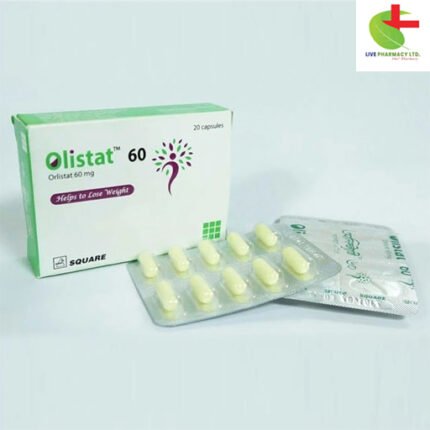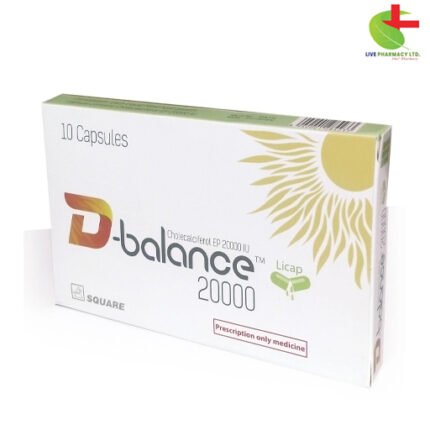D-Balance 2000
40.00৳ Strip
- Access a diverse range of Vitamin D3 supplements designed to combat deficiencies caused by limited sun exposure or dietary insufficiencies.
- Choose from a variety of products, including capsules, tablets, syrup, and injections, formulated to promote optimal bone health, prevent conditions like osteoporosis, and boost immunity.
- Benefit from precise dosage recommendations tailored for adults, children, and special populations, ensuring personalized care for individual needs.
- Trust in safe, effective Vitamin D3 supplementation, supported by expert guidance and top-quality products.
 Brand
Brand
|
Square Pharmaceuticals PLC |
|---|---|
 Generics
Generics
|
Cholecalciferol [Vitamin D3] |
Indications
Vitamin D3 insufficiency may arise in individuals with limited exposure to sunlight or those with deficient dietary intake. This crucial vitamin is indispensable for optimal calcium and phosphate absorption, vital for maintaining robust bones and teeth, and warding off conditions like rickets, osteomalacia, and osteoporosis. During pregnancy and breastfeeding, adequate Vitamin D3 levels are essential for preventing pre-eclampsia and supporting the healthy development of the infant. Furthermore, Vitamin D3 plays a pivotal role in enhancing immune function.
Pharmacology
Calcitriol, the active form of Vitamin D3, exerts its effects by binding to Vitamin D receptors (VDRs) distributed widely across various body tissues. Being fat-soluble, Vitamin D3 boasts a half-life of approximately 50 days. Following absorption in the small intestine, it binds to specific alpha-globulins and is transported to the liver for metabolism into 25-hydroxy Vitamin D3 (Calcidiol). Subsequent hydroxylation in the kidney yields 1,25-dihydroxy Vitamin D3 (Calcitriol), responsible for enhancing calcium absorption. Any unmetabolized Vitamin D3 is stored in adipose tissue and muscles before eventual elimination via feces and urine.
Dosage & Administration
For Capsules (Adults):
- Treatment of Vitamin D3 deficiency: 40,000 IU once weekly for 7 weeks, followed by maintenance therapy doses of 1400-2000 IU/day.
- Prevention of Vitamin D3 deficiency: 20,000 IU every 4 weeks, with adjustments in higher doses as necessary.
- Addition to osteoporosis therapy: 20,000 IU once a month.
For Capsules (Children 12-18 years):
- Treatment of Vitamin D3 deficiency: 20,000 IU once every 2 weeks for 6 weeks.
- Prevention of Vitamin D3 deficiency: 20,000 IU every 6 weeks.
For Film-Coated Tablets:
- Daily dosage: 1000 IU (1-2 tablets) with food or within 1 hour after a meal.
For Oroflash or Chewable Tablets:
- Daily dosage: 1000 IU to 2000 IU, with food or within 1 hour after a meal. Tablets should be chewed before swallowing.
For Syrup:
- For those at risk of Cholecalciferol deficiency: Dosage varies based on age, ranging from 400 IU/day for infants to 2000 IU/day for children aged 1-18 years.
For Injection (Prevention):
- Dosage varies based on age and condition, administered every 6 months as advised by a healthcare professional.
Interaction
Numerous medications can induce Vitamin D3 deficiencies by interfering with its absorption and metabolism. These include but are not limited to Magnesium-containing Antacids, Digoxin, Thiazide Diuretics, Cholestyramine, Phenytoin, Phenobarbital, Orlistat, Corticosteroids, and Mineral Oil. Corticosteroids, for instance, can elevate the body’s requirement for Vitamin D3.
Contraindications
Vitamin D3 is contraindicated in conditions associated with hypercalcemia, hypersensitivity to Vitamin D3 or its components, and evidence of Vitamin D3 toxicity.
Side Effects
Rare symptoms may include anorexia, lassitude, gastrointestinal disturbances, weight changes, polyuria, headache, and electrolyte imbalances.
Pregnancy & Lactation
Studies suggest safe use of up to 4000 IU during pregnancy, although individual requirements may vary. Nursing mothers should consider both their own dosage and the potential impact on breastfed infants.
Precautions & Warnings
Close monitoring of plasma calcium levels is recommended, especially in patients with renal impairment or those receiving high doses of Vitamin D3. Consultation with a healthcare professional is advised for individuals with specific medical conditions or those taking medications that may interact with Vitamin D3.
Use in Special Populations
The safety and efficacy of Vitamin D3 in children under 12 years old have not been firmly established.
Overdose Effects
Overconsumption can lead to hypervitaminosis D.
Therapeutic Class
Vitamin-D preparations essential for bone health.
Storage Conditions
Store below 30º C, away from light and moisture, and out of reach of children.













Reviews
There are no reviews yet.